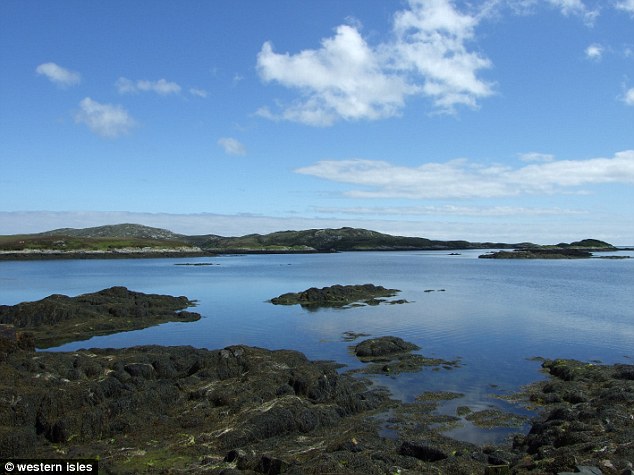Follow us !
Picturesque Scottish island sells for £500,000 - PHOTO
World
10:14 | 10.12.2013

Picturesque Scottish island sells for £500,000 - PHOTO
An uninhabited Outer Hebridean island that was home to both Bonnie Prince Charlie and Hercules the bear has been sold for over £500,000.Estate agents confirmed that an offer above the asking price has been accepted for Wiay, which lies off the coast of South Uist. The deal is expected to be concluded this week.A number of overseas bidders were also interested, but it has been sold to an un-named Scot.The island boasts the cave in which Bonnie Prince Charlie, the leader of the 1745 Jacobite rebellion, concealed himself for several days while being sought by British government forces.It was also a brief home for Hercules the bear who famously went missing on Benbecula in 1980 while filming a TV advert.The island has been uninhabited for over a century, although the current owners - the Chettle family from England, who bought it in 2003 - used it for holidays and summer camping. But the new owners will not have to make do with life underground or under canvas.A ruined croft, which was once home to ten islanders, was recently given planning permission for a new home that will provide spectacular views of the island's surroundings.Western Isles Councillors approved the renovation into a two bedroom lodge despite the recommendation for refusal by planning officers.Archie Melville of selling agents Bell Ingram, said: 'We had a lot of interest - including from overseas."It total we had about half-a-dozen serious parties and an offer in excess of the asking price has been accepted. We expect the deal to be concluded this coming week - certainly before Christmas.'The new owner is a Scot with roots in the area. He knows what owning an island in Scotland involves - and it is not a whim.'An area of land with as much history and beauty as the Island of Wiay does not come up on the market very often. 'It has a fantastic back story, once being the hidey-hole for Bonnie Prince Charlie, which is paralleled by the stunning views of the surrounding Benbecula and South Uist islands, making it the ideal location for those looking to totally escape the rat race.'The 970-acre island also has sporting rights, and in recent years the land has been used for woodcock and duck shooting. There is also red deer stalking and fishing.Located half a mile south-east of Benbecula, Wiay is accessed by private boat from Petersport to a sheltered bay close to the ruined cottage on the west side of the island.The island is predominately heather clad, with a small number of freshwater lochs, rising to 335ft at Beinn a'Tuath. But it is best known for playing its part in the escape of the prince following the defeat of his Jacobite forces at Culloden in 1746.In 1745, Charles travelled to the Highlands to raise the Scottish clans in rebellion against the current British monarch - King George II, of the house of Hanover.His plan was to make his father James Stuart, the 'Old Pretender', king.But after Culloden, he fled west and was transported to the Outer Hebrides by boat in an eight-hour voyage in atrocious conditions. He eventually sought shelter in a cave on Wiay, now known as "Prince Charlie's Rest", while his followers kept watch for the British navy. He was brought fresh clothing and it appears this was the first time the prince wore Highland dress.Prince Charles spent the next few weeks in hiding, employing several disguises. He lived like a commoner and ate drammach, a type of oatmeal mixed raw with seawater.After two months on the run, he met Flora MacDonald on South Uist and a plan was hatched to return him to Skye and then to the mainland. The Prince was disguised as Flora's "Irish Maid" - "Betty Burke" - and they made the famous journey by rowing boat to Skye, evading capture on the way.MacDonald then aided the prince in his escape to Portree, where they parted company never to meet again. After several more weeks in hiding, the prince obtained passage to France and escaped, pledging to his remaining followers that he would return with an army.Wiay since slipped back into obscurity. One former resident, William Buie, left the island in 1825 to become a banker in Canada.Although the island was logged as having six inhabitants in 1861, it was deserted by the turn of the 20th century.(dailymail.co.uk)ANN.Az










